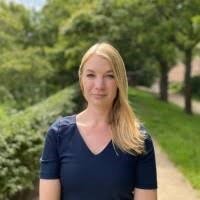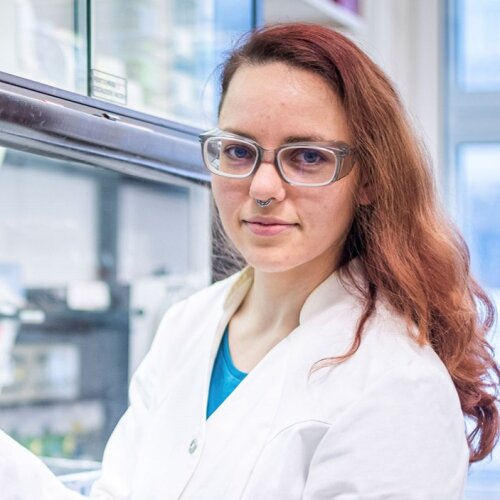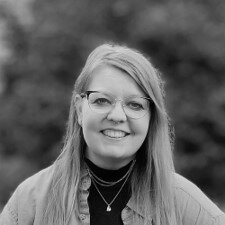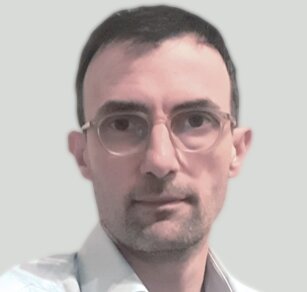Discover all presentations
Day 1 - June 3th
16:00 | Welcome and registration | |
16:45 | Opening words | Sara Vicca and Filip Meysman |
17:00 | Key note presentation. Whinbreaker: an enhanced weathering journey | Phil Renforth |
18:00 | Reception and walking dinner | Sponsored by BAM! |
Day 2 - June 4th: Morning program
Terrestrial enhanced weathering Part 1 Chaired by Tom Cox and Harun Niron | ||
08:45 | Welcome in Hof van Liere | |
09:00 | Interactions between enhanced rock weathering and organic carbon cycling | Christiana Dietzen (Invited speaker, University of Copenhagen) |
09:20 | Alive and dead earthworms capture carbon during mineral weathering through different pathways | Tullia Calogiuri (Wageningen University & Research) |
09:35 | Enhanced weathering and biochar co-deployment provides complementary CO2 removal strategies in a lysimeter field experiment | Emily Pas (Wageningen University & Research) |
09:50 | Beyond inorganic C: Soil organic C as a key pathway for carbon sequestration in Enhanced Weathering | Laura Steinwidder (University of Antwerp) |
10:05 | Coffee break | |
Terrestrial enhanced weathering Part 2 Chaired by Tom Cox and Harun Niron | ||
10:45 | Enhanced silicate weathering for N₂O reduction: What does the experimental data show? | Silvia Poblador (CREAF) |
11:00 | Enhanced weathering in tropical agricultural systems | Paul Nelson (James Cook University) |
11:15 | A rapid enhanced weathering signal with limited and soil-dependent associated CO2 removal: Lessons from a 3-year field trial | Xavier Dupla (ETH Zürich) |
11:30 | Updated empirical data ERW field experiments in tropical Colombia | Camilo Montes (Universidad del Norte) |
11:45 | Natural soil formation under high basalt dust flux - implications for enhanced rock weathering | Tobias Linke (University of Hamburg) |
12:00 | Lunch | |
Day 2 - June 4th: Afternoon program
12:45 - 13:45 Poster session 1 | ||
Novel methods & Engineering-based approaches Part 1 Chaired by Arthur Vienne and Laura Steinwidder | ||
14:00 | A Bio-Geo Love Story: combining biochar with enhanced rock weathering is the new shit! | Maria-Elena. Vorrath (Invited speaker) |
14:20 | The effect of CO₂ partial pressure on carbonate mineral saturation: Implications for CO₂ sequestration | Lukas Rieder (University Hamburg) |
14:35 | Geochemical modelling to quantifying the impact of secondary mineral formation on CDR potential in a dunite reactor system | Tom Cox (University of Antwerp) |
14:50 | Predicting the CO2 removal potential of artificial nickel laterites using reactive transport modelling | Amy McBride (Independant researcher) |
15:05 | Coffee break | |
Novel methods & Engineering-based approaches Part 2 Chaired by Arthur Vienne and Laura Steinwidder | ||
15:50 | Effects of oxalate, citrate, and EDTA salts on dunite weathering | Harun Niron (University of Antwerp) |
16:05 | Using confined ocean alkalinity enhancement to mineralize carbon dioxide and enhance bio-LC3 as sustainable building material | Harn Kua (National University of Singapore) |
16:20 | A Bio-accelerated silicate weathering: a cost-effective solution for climate change mitigation | Michiel Van Tendeloo (University of Antwerp) |
17:00 | Guided city walk from Hof van Liere to Horta (all free to join, please register before noon) | |
19:00 | Conference dinner (only after registration and payment) | |
June 4th: Poster session 1
1.01 | A comparison of weathering rates across soil types: Initial results and lessons learned in mesocosm design. | Franky Barton (University of Copenhagen) |
1.02 | Long-term carbon removal using crushed returned concrete:
Evidence of sustained cation and bicarbonate export over four years. | Megan Carroll (Silicate Carbon) |
1.03 | Effects of basalt and organic amendments on soybean growth under drought (water-stress) conditions. | Micaela Cosgrove (University of Antwerp and ILVO) |
1.04 | Enhanced rock weathering with citrus in São Paulo, Brazil: Co-benefits and learnings. | Marcella Daubermann (InPlanet) |
1.05 | Quantifying cation release dynamics from enhanced rock weathering in soils: The impact of cation exchange capacity. | Lara Feiertag (University of Hamburg) |
1.06 | Enhanced weathering of wollastonite for sustainable managed forests. | Minger Guo (Trent University) |
1.07 | Optimizing enhanced rock weathering for carbon sequestration: Balancing organic and inorganic carbon dynamics across basalt weathering stages. | Kaiyu Lei (University of Munich) |
1.08 | Influence of basalt particle size on water percolation dynamics and carbon sequestration | Sahar Naveed (University of Antwerp) |
1.09 | Challenges in quantifying low weathering rates of silicate minerals in silty soils in Denmark | Malgorzata Rizzi (Copenhagen University) |
1.10 | Insights into morphological and mineralogical changes of 4 feedstock materials after one year of enhanced rock weathering (ERW), | Johannes Jacob Rübben (FAU Erlangen-Nuernberg) |
1.11 | Long-term responses and leaching in an acidified K-deficient Picea abies L. stand to alkaline K rich soil amendments | Robrecht Van Der Bauwhede (Catholic University of Leuven) |
2.01 | Novel fungal isolate for enhanced silicate weathering of dunite in citric acid system | Abhijeet Singh (Uppsala University) |
2.02 | Basalt meal interacting with the composting process: effects on enhanced weathering versus effects on the compost quality | Bart Vandecasteele (ILVO Flanders) |
3.01 | Public perceptions of implementation scenarios for enhanced rock weathering in a cross-country setting | Chad M. Baum (Aarhus University) |
3.02 | Bridging science and practice: A certification protocol for CO₂ uptake in enhanced rock weathering. | Pol Knops (Climate Cleanup) |
3.03 | A geospatial analysis of key areas for enhanced rock weathering in Germany | Sedrik Nauenburg (University of Hamburg) |
3.04 | River alkalinity enhancement using reactors: A shortcut to control and achieve inorganic CDR? | Arthur Vienne (University of Antwerp) |
3.05 | Economic feasibility of enhanced rock weathering carbon credits deployment in Southeast Asia through mixed-methods analysis | Yiwen Zhang (Nanyang Technological University Singapore) |
4.01 | Developing tools for streamlining carbon credit verification and enabling deployment-scale learning in enhanced weathering | Katie Earl (Isometric) |
4.02 | Learnings so far from the largest EW greenhouse experiment and potential implications for the EW community and future MRV developments | Jens Steffen Hammes (Carbon Drawdown) |
4.03 | Anionic Resin as an MRV strategy for measuring DIC at ERW deployments in rice paddies | Robin Marlar Rajendran (Mati Carbon) |
5.01 | Stability and dissolution kinetics of a new form of amorphous calcium carbonate synthesised without inhibitor: Insights for enhancing ocean alkalinity | Alex Kapadia (Heriot-Watt University) |
Day 3 - June 5th: Morning program
Enhanced rock weathering at scale Part 1 Chaired by Lucilla Boito and Cedric Goossens | ||
08:45 | Welcome in Hof van Liere | |
09:00 | The EU certification framework for carbon removals | Fabien Ramos (Invited speaker, European Commission) |
09:20 | Enhanced weathering, carbon removal time-lags, and carbon crediting | Noah Planavsky (Yale University) |
09:35 | Bridging science and policy: Overcoming scientific gating questions to unlock high-priority policy levers for enhanced rock weathering | Rachel Smith (Cascade Climate) |
09:50 | Building ERW for scale: Risk management within a project finance perspective | Adam Wolf (Eion) |
10:05 | Coffee break | |
Enhanced rock weathering at scale Part 2 Chaired by Lucilla Boito and Cedric Goossens | ||
10:50 | Potentials of ERW carbon insetting in Southeast Asia to form a more sustainable supply chain: LCA and TEA | Yiwen Zhang (Nanyang Technological University Singapore) |
11:00 | A system analysis on the feasibility of Flemish agricultural negative emissions through enhanced weathering, biochar and soil organic carbon sequestration | Ennio Facq (ILVO) |
Mineral-based ocean alkalinity enhancement Part 1 Chaired by Gunter Flipkens and Benjamin van Heurck | ||
11:20 | Kinetics of hydrated carbonate dissolutions in seawater aiming ocean alkalinity enhancement using a promising technology | Laura Bastianini (Invited speaker, Heriot-Watt university) |
11:40 | Ocean alkalinization and minerals: enhanced rock weathering in different marine environments | Filip Meysman (University of Antwerp) |
12:00 | Lunch | |
Day 3 - June 5th: Afternoon program
12:45 - 13:45 Poster session 2 | ||
Mineral-based ocean alkalinity enhancement Part 2 Chaired by Gunter Flipkens and Benjamin van Heurck | ||
14:00 | Basalt and kimberlite as alternative resources for application in coastal ocean alkalinity enhancement | Tom Huysmans (University of Antwerp) |
14:15 | Natural enhanced carbonate dissolution in the coastal ocean limits ocean alkalinity enhancement potential | Sebastiaan van de Velde (University of Antwerp) |
14:30 | Preliminary geochemical and ecological results from an ocean alkalinity enhancement field trial with olivine sand in North Carolina, USA | Emilia Jankowska (Houglass Climate NPO) |
Advancing MRV for enhanced rock weathering Chaired by Sara Vicca and Tom Huysmans | ||
14:45 | The evolution of MRV in global enhanced weathering projects | Ella Holme (Invited speaker, Isometric) |
15:05 | Considerations for soil mass-balance MRV for ERW at commercial Ag-scale in the US South | East Elliot Chang (Lithos Carbon) |
15:20 | Coffee break | |
Advancing MRV for enhanced rock weathering Chaired by Sara Vicca and Tom Huysmans | ||
15:50 | Development of total cation accounting as a monitoring approach for enhanced rock weathering | Rosalie Tostevin (University of Cape Town) |
16:05 | Aggregated monitoring of enhanced rock weathering outperforms quantification based on individual deployments | Tim Jesper Suhrhoff (Yale University) |
16:20 | Utilizing in-soil CO2 flux estimation as a direct MRV technique for ERW quantification | Ella Milliken (Yale University) |
16:35 | Closing words and Early scientist career award ceremony by UNDO | |
June 5th: Poster session 2
1.01 | Refining empirical models for liming efficiency: Integrating silicate mineral reactivity and climate dynamics in sustainable agriculture | Francisco Araujo (University of Guelph) |
1.02 | Exploring the mechanisms of ectomycorrhizal fungal interaction with enhanced rock weathering in white pine seedlings | Kira Biener (Yale University) |
1.03 | Carbon dioxide removal from enhanced weathering in Brazil: a case study with degraded pastures | Mariane Chiapini (InPlanet) |
1.04 | Field-scale ERW trials in California - Lessons learned and future directions | Kenzo Esquivel (Lawrence Livermore National Lab) |
1.05 | Rock powder application: Perspectives for the use as buffer restoration measure in acidified soils | Sophia Findeisen (University of Antwerp) |
1.06 | Investigating the impact of three nitrogen fertilisers on enhanced weathering outcomes with limestone | Kelsey Leet (Silicate Carbon) |
1.07 | Mineralogical controls on ERW in a tropical soil, São Paulo State, Brazil | David Manning (Newcastle University) |
1.08 | Carbon dynamics of different soils in peri urban Lucknow, India: A quest for ecosystem services in a regional perspective | More Nandkishor (Babasaheb Bhimrao Ambedkar University) |
1.09 | Metal accumulation risk assessment for enhanced rock weathering deployments | Noemma Olagaray (Cascade Climate) |
1.10 | Exploring potential synergies: Co-deployment of enhanced weathering and biochar on cropland soils | Jasper Roussard (University of Antwerp) |
1.11 | What did we learn from two multiyear enhanced weathering field trials combining one Greek ultramafic rock with cotton and alfalfa? | Ingrid Smet (Carbon Drawdown Initiative) |
2.01 | Accelerating reactor-based CO2 sequestration by combining basalt with steel slag | Kaja Czub (University of Antwerp) |
2.02 | The impact the enhanced rock weathering (crushed basalt) has on soil hydrology and CO2 efflux | Tanya Trott (Swansea University) |
2.03 | Unravelling soil secrets: Exploring the organic and inorganic carbon interactions in enhanced weathering | Charline Vandenhove (University of Antwerp) |
3.01 | Modeling biophysical and economic suitability for ERW in tropical Africa at scale | Abigail Fitzgibbon (Sciences Po) |
3.02 | Can enhanced rock weathering become a significant component of urban farming? | Zhaofeng Ouyang (Asian School of the Environment, NTU) |
3.03 | Scaling enhanced rock weathering through policies and fit-for-purpose measurement frameworks | Beck Woollen (Carbon Removal Standards Initiative) |
4.01 | From measurements to credits: navigating the complexity of ERW verification | Mattew Clarkson (InPlanet) |
4.02 | Industrial deployment of enhanced rock weathering and synergies for the EU C-SINK project in Finland and Spain. | Evangelos Mouchos, CO2RE - University of Bristol |
4.03 | Hierarchical cluster analysis as a tool for spatial extrapolation in an ERW project setting | Patrick Orenstein (ZeroEx) |
5.01 | Weathering of steel slag in seawater and marine sediment for ocean alkalinization | Gunter Flipkens (University of Antwerp) |
5.02 | Coastal olivine weathering and microbial community structure: insights from natural sediments at Papakōlea and Richardson Beach, Hawai’i, USA | Benjamin Van Heurck (University of Antwerp) |
Invited speakers
Proud to already announce these four invited speakers. Make sure to follow us as more will be announced in the upcoming weeks.

| Christiana Dietzen leads the Agriculture Section of the Globe Institute's Centre for Glacial Rock Flour Research. She studies the potential for carbon sequestration via enhanced weathering as a result of glacial rock flour applications to agricultural soils, as well as glacial rock flour's ability to improve crop yields by providing plant nutrients. |

| Maria-Elena Vorrath is a postdoctoral Researcher at the University of Hamburg. She is an expert on enhanced rock weathering, passionate about geosciences and climate action and does not accept the status quo. |

| Laura Bastianini is an experimental geochemist who received her doctorate from the University of Hull (UK) where she investigated the relationship between minerals and waters at alkaline waste sites. Currently, she works as a Postdoctoral Researcher at Heriot-Watt University in Greenhouse Gas Removal within the Research Centre for Carbon Solutions to study the geochemical kinetics of hydrated carbonates and their stability in air and seawater aiming ocean alkalinity enhancement. Her research expertise includes water quality testing, monitoring transient carbonate minerals, hyperalkaline steel slag leachates, carbonate sedimentology and a range of different techniques such as FTIR, Raman spectroscopy, XRD, SEM, and petrographic microscopy. She is one of the first researchers who stands at the interface of carbonate geochemistry and environmental science, and she has pioneered research in this area during her career. |

| Ella Holme, Ph.D. is the Head of Mineralization Science at Isometric. She previously served as a Research Scientist at CREW Carbon and worked as a Postdoctoral Researcher in Noah Planavsky's lab at Yale University’s Department of Earth and Planetary Sciences. Her research focussed on experimental geochemistry, the kinetics of enhanced mineral weathering reactions, the physical and chemical evolution of rock during enhanced weathering and the limits of carbon capture in natural waters. Ella holds a Ph.D. in Geosciences from Stony Brook University, where she studied the origins of iron carbonates in Ontario’s Paleoproterozoic Gunflint Formation. Isometric is the world’s most rigorous carbon removal registry with a mission to ensure the transition to carbon removal happens responsibly and fast. As buyers shift from low-quality offsets to durable carbon removal, Isometric is trusted to issue the highest-quality carbon credits in the world, backed by science. Isometric’s robust rules for carbon removal raise the bar for scientific rigor, transparency and incentive alignment, addressing the problems that plagued the traditional carbon market |

| Prof Phil Renforth combines skills in civil and process engineering, engineering geology, and geochemistry to investigate methods of atmospheric CO2 removal through reaction with rocks and minerals. This includes connecting experimental work from bench-top to pilot scale, with technology and environmental impact assessment. In 2019 he co-founded and now co-chief edits of the world’s first dedicated publication on carbon removal (Frontiers in Climate: Negative Emission Technologies) and was the science coordinator for the UK’s Greenhouse Gas Removal Research Programme (2020-2022). He was a contributing author to Chapter 12 of Working Group III 6th Assessment Report from the IPCC. |

| Policy officer Dr. Fabien Ramos is working at the European Commission in the Directorate general for Climate Action. His work focuses on agricultural policy support, playing an active role in the preparation of the long-term strategy for a climate-neutral EU and more recently in the 2030 climate target plan for the European Green Deal. Fabien is now working on the development of an EU regulatory framework for the certification of carbon removal. |